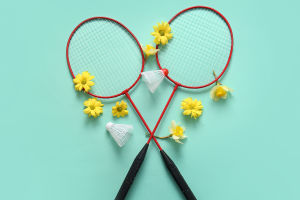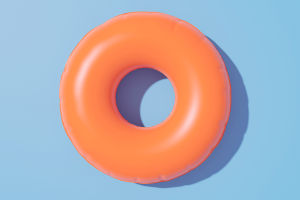In the United States, pickleball is a quickly expanding sport that is enjoyable for players of all ages and simple to learn.
A blend of tennis, badminton, and ping-pong, pickleball can be played indoors or outdoors on a court about the size of a badminton court.
For beginners, this guide will provide essential rules, useful tips, and gear recommendations to get you started.
Understanding the Basic Rules
While pickleball shares similarities with other racket sports, it has unique rules that make it easy and enjoyable for beginners:
1. Serving: Serves are made underhand, and the ball must be hit below waist level. You start behind the baseline, serving diagonally across the court. Unlike tennis, there's no second serve – so aim carefully!
2. Scoring: Pickleball is played to 11 points, but you must win by 2. Only the serving team can score points. If the serving team faults, the serve goes to the other team without a point being awarded.
3. The Double-Bounce Rule: This rule helps beginners avoid constant volleying. Each team must let the ball bounce once on their side before they can hit it in the air (or "volley" it). After the ball has bounced once on each side, it can be volleyed as long as the player is outside the "no-volley zone."
4. The No-Volley Zone ("The Kitchen"): This is a seven-foot area on both sides of the net. You can't hit a volley (a shot without a bounce) in this zone, preventing players from crowding the net and dominating with aggressive smashes.
Essential Gear for Beginners
Investing in good-quality pickleball equipment can make a big difference in your game. Here are some essentials to get you started:
1. Paddle: Pickleball paddles are unique, somewhere between the size of a ping-pong paddle and a tennis racket. A composite or graphite paddle is the best option for novices. Composite paddles are light, durable, and provide good control, while graphite paddles offer excellent power.
2. Ball: Pickleball balls are typically made of plastic and have holes similar to a wiffle ball. Indoor balls have fewer holes (around 26) and are lighter, while outdoor balls have more holes (usually 40) to withstand wind. For beginners, it's smart to start with a standard indoor ball, which is easier to control.
3. Shoes: Proper court shoes are essential to prevent slipping and support quick lateral movements. Choose non-marking court shoes with good grip and ankle support. Avoid running shoes, which can cause instability and potential injuries.
Tips to Improve Your Game
Here are some useful strategies and tips to help you excel at pickleball as a beginner:
1. Master Your Serve: Since the serve is the only time you have complete control of the ball, practice it! Aim for consistency over power. Start by hitting it deep and low into the opponent's court, minimizing their attack options.
2. Focus on Accuracy: Many beginners swing wildly, which leads to lost points. Instead, work on accurate shots and aim for open spaces. Control is more important than power in pickleball.
3. Learn to Dink: A dink is a soft shot that lands just over the net, ideally forcing your opponent to move forward. This technique can disrupt aggressive players and create scoring opportunities. Practicing your dink can make a huge difference in your gameplay.
4. Play with Patience: Pickleball isn't just about speed and aggression; patience is key. Waiting for the right moment to attack and controlling your shots helps you stay in rallies longer and tire out your opponents.
Getting Started: Where to Play and Learn
Many community centers and parks now offer dedicated pickleball courts, making it easy to find a place to play. Some communities even offer beginner classes, where you can learn the rules and techniques with others at your level. It's worth checking local recreation centers or sports facilities for beginner-friendly leagues.
Benefits of Playing Pickleball
Aside from being incredibly fun, pickleball offers numerous health benefits, especially for beginners looking for a low-impact activity:
1. Cardiovascular Health: Pickleball offers a great cardio workout without the high-impact strain found in sports like tennis or running.
2. Social Interaction: Pickleball is often played in doubles, making it a social activity. You'll meet new people and make friends while getting fit.
3. Improved Coordination: With practice, pickleball helps you develop hand-eye coordination, agility, and quick reflexes.
4. Suitable for All Ages: Since pickleball is less intense than tennis, it's ideal for people of all ages, from young players to active retirees.
Starting with pickleball as a beginner is easy and rewarding. All it takes is a basic understanding of the rules, a few pieces of essential gear, and some practice. Before you know it, you'll be playing like a pro, enjoying all the health and social benefits that come with this fantastic sport. So grab a paddle, find a court, and let the pickleball fun begin!


